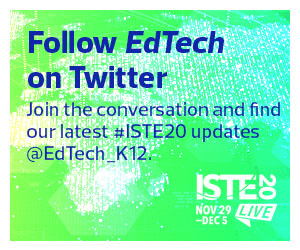The Importance of Fostering Empathy and Equity
K–12 schools have persistently had numerous disparities along racial and economic lines. The pandemic, and the pivot most K–12 schools had to make to implement remote learning, exposed the severity of longstanding inequities as well as their consequences. An immediate challenge for many districts was to equip students and teachers with mobile devices needed for online instruction. A related challenge was to ensure that those who lacked reliable internet access at home could get it.
That digital divide is contributing to “a significant amount of learning loss, particularly with students with disabilities” and those who lack the connectivity and technology to access online instruction, said Sonal Patel, digital learning innovation coordinator for San Bernardino County Superintendent of Schools. “That gap is going to continue to widen, and mitigating that learning loss is going to be a really big issue.”
Inequity also has “another side for teachers,” said Patricia Brown, instructional technology specialist at Ladue School District in Missouri. That is “not having access to quality and high-level professional learning, especially as it relates to how you integrate technology effectively and provide those opportunities and access for your students.”
Sessions urged educators to tackle and diminish disparities, foster engagement and otherwise support students, and aimed to give them tools to do so. Racism factors into that work.
“At any moment, a person is being racist or antiracist,” bestselling author Ibram X. Kendi said in one session. “The reason why that’s critical is because we’ve been taught something different. We’ve been taught that ‘racist’ is essential to who a person is, it’s a fixed category, it’s in a person’s heart. That’s one of the reasons why people are unwilling or unable to admit the times in which they’re being racist.”
Acknowledging that actions can be racist rather than the sum of a person would help with addressing racist policies and practices that perpetuate disparities and inequities in schools, he said.
As educators, “we are either being racist or antiracist,” Kendi said. “We are either teaching our children to be racist or antiracist.”
Educators should create learning environments where different cultures and lifestyles are valued, taught and understood equally, and where stereotypes — such as that Black students are more likely to misbehave — are not embraced, he said.
In other words, educators should foster empathy.
“We should be building learning environments that encourage students to want to know, that encourages critical thinking, that encourages students to realize when there is a problem of inequity that it’s not because there’s something wrong and inferior about a group of people,” Kendi said, “but that there’s something wrong and inferior about our society, that there’s something bad about our policies, our conditions. That causes the mind to think, ‘Well, what are those problems?’ as opposed to disparaging other groups of people.”
How Educators Can Encourage Stronger Human Connections
Educators often point to culturally relevant curricula as an example of a way to encourage empathy.
Another issue besides students’ ability to remotely connect to their teachers is their ability “to connect to the content,” said Ken Shelton, a professional speaker and educational strategist.
How are students connecting to narratives “that are not accessible in your library or in your physical home or in your teacher’s classroom? How are you connecting to other experts? Teachers have an expertise, but they’re not necessarily the expert.”
Technology and online resources could help make instruction more relevant for students. For example, Shelton said, if he was teaching science, he could use the internet to connect his students to an actual scientist.
That’s an approach Megan Forbes takes with her middle school students, and one she shared with the ISTE20 audience. Forbes, a teacher at Arcadia Unified School District in California, described incorporating YouTube videos — such as a Fung Bros. video about Hmong culture — as well as blogs and other readily available digital content into relevant lessons. For example, when she had her students read literature by Indigenous authors, she shared with them a video of Indigenous people talking about their lives.
She encouraged teachers to see the work of incorporating culturally diverse perspectives into their lessons as “powerful and enriching.”
“Exposure to new people and perspectives and cultures is not drudgery,” Forbes said. “This is learning at its best.”
Another teacher, Brandie Wright, urged ISTE20 participants to turn fear into power. Wright was a district-level technology coordinator until the new school year, when she started her first year as a teacher. Teaching, she said, had been a lifelong dream.
A challenge for teachers during remote learning is to build relationships with their students, she said.
“Since we can’t hug our students, we can’t have a pizza party, we can’t send them to the snack drawer, how do we show them that we care?” Wright said. “What’s your virtual snack? What’s your virtual hug?”
Wright said she uses music to connect to her students and uses virtual tools to chat with them.
Lee, the Alabama principal, incorporates students and staff in parody videos that he shares on his YouTube channel. A COVID-19-themed video he released this summer, “Can’t Touch This,” went viral. His latest video is a pandemic-themed Ghostbusters parody called “Germ Busters.”
The silly videos have a serious purpose: to build connections between Lee, his school and the broader community. He encouraged educators to find ways to do the same, even when remote.
“Let the kids that walk into your virtual classroom say that this is the best day ever. This class session is the best ever,” Lee said. “Why? Because they have the best teacher ever. Be the teacher that they won’t forget, the educator that believed in them and allowed them to believe in themselves.”
Join EdTech as we provide written and video coverage of ISTE20. Bookmark this page and follow us on Twitter @EdTech_K12.











